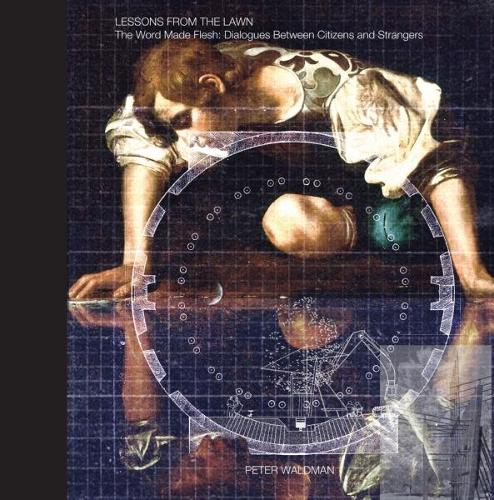
Lessons from the Lawn: The Word Made Flesh: Dialogues Between Citizens and Strangers
(Hardback)
Publishing Details
Lessons from the Lawn: The Word Made Flesh: Dialogues Between Citizens and Strangers
By (Author) Peter Walman
Oro Editions
Oro Editions
30th January 2019
United States
Classifications
General
Non Fiction
724/.6
Physical Properties
Hardback
176
Width 279mm, Height 279mm
Description
This project demonstrates the utility of heuristic thinking serving as an introduction to the central core of the book: the primer of spatial and material elements, which guides individuals and groups to analyse, engage, and initiate the constructed environment. It provides a broad overview to the analytical method Waldman has developed over half a century of teaching and practice, framing its relevance of architecture at the scales of both the garden and the city and the importance of understanding 'building' as a verb. Waldman reflects here on how his lessons are all around us, first chanted as nursery rhymes, then synthetic carols, if not complex chora, to reveal the utility of orientation and the profound effects of gravity. Finally, this book lands readers on the Lawn in an essay on the contemporary relevance of Charlottesville's Landscapes of Aggression of 8/11/2017 and resilience founded on the eschatological catalyst of Fallow Ground. Jefferson kept journals all his life at Monticello and later at Poplar Forest of both natural conditions and human consequences and made plans accordingly of building up and tearing down to make a covenant with the world, again. AUTHOR: Peter Waldman is rumoured to have quarried mica ever since his early childhood explorations of the wilderness of New York City, more than seven decades ago. He studied architecture from 1961-69, first at Princeton University, and later as a Peace Corps volunteer architect in Arequipa, Peru. He served his apprenticeship in the studios of Richard Meier briefly and more substantially with Michael Graves. Since the 1970s, he has been an architect and educator teaching first at Princeton, briefly at the University of Cincinnati, then at Rice University and currently at the University of Virginia, where he is now firmly grounded in the Piedmont condition. His extensive residential practice has been concerned with the Climatic House confirming the ground rules of the city constructed according to Specifications for Construction anticipating the encampment of Citizens and Strangers. His fables of the Gardener and the Engineer manifest his profound respect for the spirit and resources of the resilient American urban condition. SELLING POINT: Waldman recounts spatial tales of origin as specifications for construction encoded in Jefferson's Academical Village in collaboration with surveyors, nomads and lunatics 140 colour images
Author Bio
Peter Waldman is rumoured to have quarried mica ever since his early childhood explorations of the wilderness of New York City, more than seven decades ago. He studied architecture from 1961-69, first at Princeton University, and later as a Peace Corps volunteer architect in Arequipa, Peru. He served his apprenticeship in the studios of Richard Meier briefly and more substantially with Michael Graves. Since the 1970s, he has been an architect and educator teaching first at Princeton, briefly at the University of Cincinnati, then at Rice University and currently at the University of Virginia, where he is now firmly grounded in the Piedmont condition. His extensive residential practice has been concerned with the Climatic House confirming the ground rules of the city constructed according to Specifications for Construction anticipating the encampment of Citizens and Strangers. His fables of the Gardener and the Engineer manifest his profound respect for the spirit and resources of the resilient American urban condition.
